- Local Offer Home
- Inclusion Support Offer (ISO) Blog
- ISO visit to Park Road
ISO visit to Park Road
Excavating ancient artefacts, Afternoon Tea with the Queen, hunting dinosaurs and dissecting Stone Age poo...
Who wouldn’t want to be part of experiences like these?
(You were with me until the poo, weren’t you?)
In Spring 2021, the teaching and learning within our wider curriculum was ‘fine’. But our children deserved more than that. A Book scrutiny showed us that our SEN children, in particular, were not being catered for. They were typically taken out of lessons to work on their personal targets; yet in doing so, they missed out on so much.
We wanted two things (in truth, we wanted lots of things, but we reigned ourselves in, initially focusing on):
- Creating more exciting and immersive learning experiences for our children.
- Developing an inclusive curriculum where all children get the chance to succeed and shine.
Adopting the Cornerstones approach seemed the perfect fit: an enquiry-based, hands-on approach, where children would be immersed in engaging and meaningful experiences.
But how could we ensure our SEN children met their personal targets, if we were taking away their weekly interventions? It took careful consideration, involving teachers looking at children’s personalised plans and considering how they could be given opportunities to work on their targets within lessons.
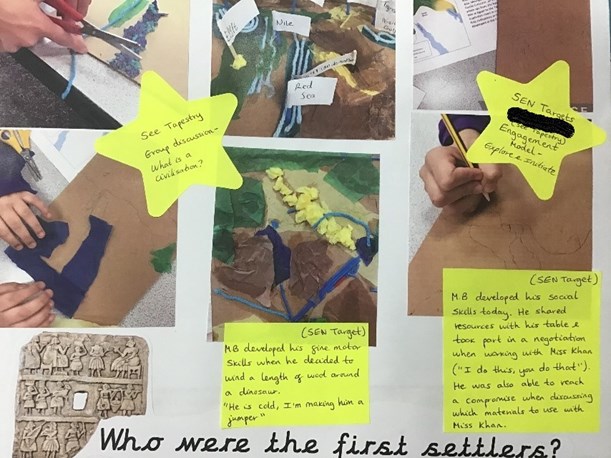
It was also paramount that we created classroom environments where peer on peer collaboration and child-led enquiry were at the core. Introducing floor books proved the perfect way to foster this collaboration and evidence children’s learning. As a Thrive school, this felt a natural way forward and encouraging children to work with those they wouldn’t usually, is helping to develop social interaction and resulting in more positive relationships between children. Our SEN children are now at the heart of our approach, integrated and included within the class.
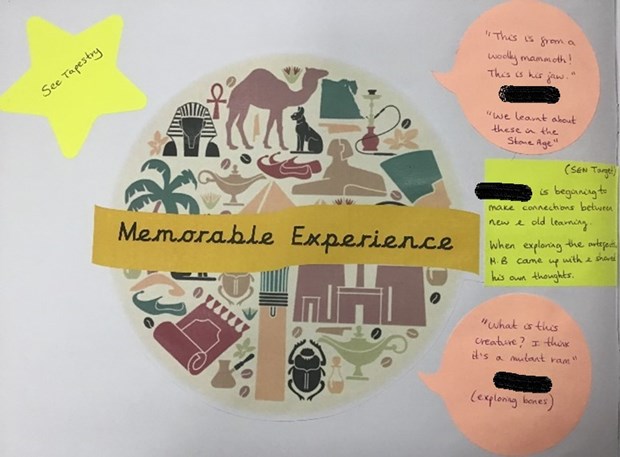
Pupil Voice has also become central to our curriculum; this has shown great benefits in terms of children’s attitudes towards their learning. Where writing is a barrier, this can involve an adult scribing the thoughts of a child, allowing us to assess what a child knows about a topic.
Tapestry has also been a hugely valuable tool, allowing us to record observations, alongside photos and videos:
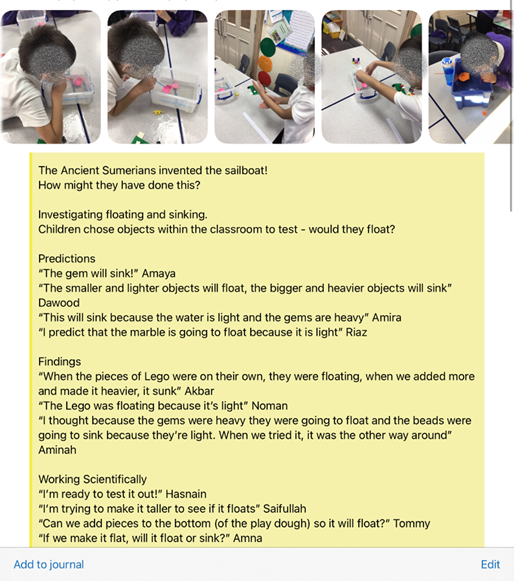
Would we have seen the same outcomes had each and every lesson involved writing answers on a worksheet? A simple table helps us RAG-rate children’s achievement against the lesson’s Success Criteria:

The Engagement Model was the final piece of the jigsaw; it naturally complemented our approach, with adults referencing the 5 areas during observations:
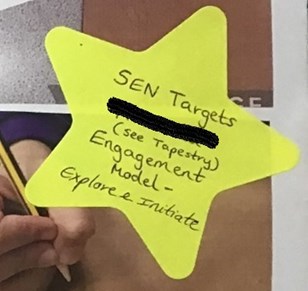
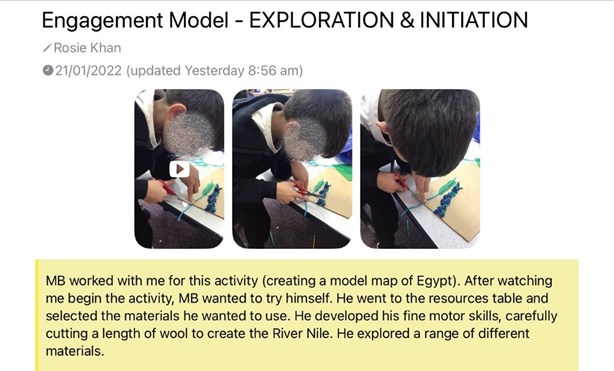
As a school, this approach has allowed us to move away from traditional provision maps and instead evidence and track children’s achievements within the floor books, which we feel tell more of a story about our children as a whole. It’s been hard work and it’s been messy (have you ever tried to make Stone Age poo?) but it’s been so worth it to see our children flourish and move forward in their learning journey.
(And with collaboration in mind, do get in touch if you would like to learn more!)
Rosie Khan (creative curriculum lead)
Lucy Kingswell ( SENDCO )

Leave a comment